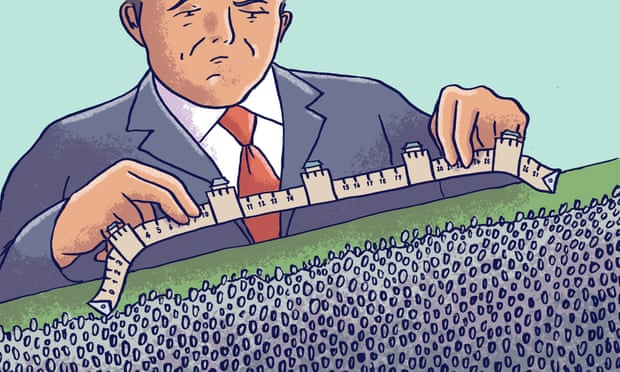Rana Mitter

Last week, the UN’s global population project announced a major shift in the way the world looks. Next year, India, not China, will be the world’s most populous country. Right now, China has 1.43 billion people to India’s 1.41 billion, but by mid-century there will be more than 1.6 billion Indians to around 1.3 billion Chinese.
At one level, this development ought to delight Beijing, which compelled its population into a “one child” policy for some 40 years. Yet there may be a few disconsolate faces in Beijing. The idea of China being the most populous society in the world has long been linked to the country’s rise. Officially, China dismisses any idea that being at the top of global rankings matters: in January this year, vice foreign minister Le Yucheng declared that China had no interest in becoming the world’s biggest economy or superpower and would instead work on improving its people’s lives at home.
Yet for years, Chinese social media has overflowed with confrontational voices demanding that the country should be “No 1”. The drop to No 2 in global population is likely to bring soul-searching about that quest for the other global top spot.
Despite those denials from its leaders, there’s no doubt that China is aiming to become the world’s largest economy, and by some measures such as purchasing power parity, it already is. In terms of nominal GDP, it’s still No 2 to the US, but many economists suggest that it’s likely to reach the top by the late 2020s (although unexpected factors such as the economic effects of Covid quarantines could get in the way).
The quest to grow GDP is part of a wider project to head the rankings in a range of areas. During the 1980s and 90s, Chinese policymakers responded to challenges from the paramount leader, Deng Xiaoping, to construct a model that tracked a concept they termed “comprehensive national power” (zonghe guoli). Much of the assessment started within the military, with assessments of weaponry and training, but attention quickly turned to economic factors. Deng’s analysts ranked its existing resources such as its labour force and material and mineral resources, as well as projecting future capacity in areas such as new technologies.
During the 1990s, scholars debated how far China had risen in the global rankings. However, in the 00s ambitions shifted: instead of “comprehensive national power”, Chinese analysts started to talk in terms of increasing China’s “soft power” – the capacity that states have to lead other states through persuasion rather than coercion.
For much of the period since 1945, the US has been the undisputed No 1 in this area. Despite the many geopolitical disasters (Vietnam, Iraq) and domestic injustices (the politics of race), the capacity of the US to project an idea of itself around the world has been – and remains – immensely strong. There is a reason that Xi Jinping was just one of the many Chinese parents who sent his daughter to study in the US.
China has poured immense resources into trying to turn itself into a soft power superpower over the past two decades. The effort has seen some success, particularly in the global south: the idea of China as an impressive technology innovator has taken hold in large parts of sub-Saharan Africa and Latin America, where cheap and effective 5G provision has trumped fears about security. Chinese multi-part dramas and soaps have become popular across south-east Asia, and have started to develop an audience in some African countries: last year, social media users in Kenya became big fans of the major Chinese TV fantasy series The Untamed. TikTok, a product of the Chinese company ByteDance, has been a cultural gamechanger, although some of its success stems from downplaying its links to its country of origin.
Even India, a country generally wary of China’s geopolitical intentions, sees regular anguished debates about why it can’t match China’s GDP and poverty reduction record. It also can’t match the audience China has for its story about its rise to global power.
Yet overall, China’s desire to become the No 1 soft power generator has stalled, still ranking well behind the US. One reason is the top-down control that shapes Chinese policy at home. The most powerful soft power generators in China’s neighbourhood, such as Japanese manga and South Korean pop, emerged when their countries liberalised and developed a civil society. China has moved in exactly the opposite direction in recent years; for instance, restrictions imposed on Hong Kong under China’s 2020 national security law have increased film censorship, along with warnings that museums in the city should avoid artworks that might undermine a loosely defined national security.
Additionally, China also sends out confusing vibes about how accessible its own culture and society really are. Its government argues that outsiders can’t criticise its politics because it operates under a unique system of “socialism with Chinese characteristics” that would suit no other state, yet also projects the idea of “Chinese wisdom” that can act as a resource for the world.
America’s soft power derives from the idea that anyone – in theory – can become American by buying into its culture and values. China has struggled to make a similar, consistent claim and hobbled its own narrative as a result. Despite spending hundreds of millions to boost its position in the world soft power rankings, China hovers between an eight to 10 ranking.
It’s still not clear what it means for China to be No 1: GDP alone doesn’t capture the sense of aspiration behind the idea. But as it slides into No 2 in terms of population size, there is no doubt that its leaders will devote even more attention to attaining that elusive, ill-defined goal in areas that they still feel they can control.
No comments:
Post a Comment